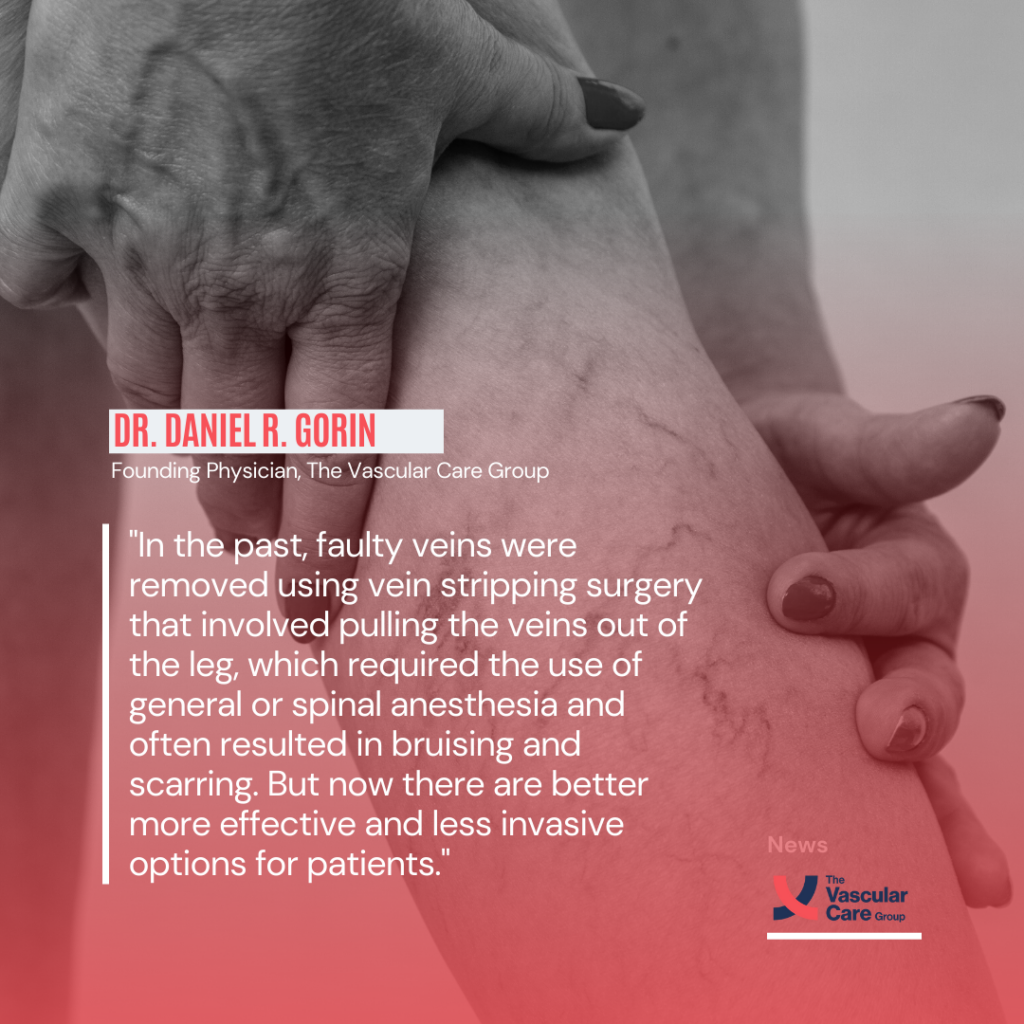If you have squiggly, bulging veins in your legs that look like a version of a road map, you are among the 35 percent of people living in the United States who have varicose veins, according to the Society for Vascular Surgery.
“Varicose veins develop in the superficial veins just under the skin,” said Daniel R. Gorin, MD, RVT, FACS, a vascular surgeon with the Vascular Care Group in Hyannis. “They can become uncomfortable, achy, burning, itchy and sometimes as the skin thins over them, they can rupture and bleed. You can develop swelling in your legs, changes in the skin and tissues resulting in chronic venous insufficiency leading to ulcers.”
Unlike the deep veins in the legs that do all the work of circulation in your legs, these are minor veins that aren’t that important to circulation, explained Dr. Gorin. It is a problem you are likely born with and, overwhelmingly, people who develop varicose veins have someone in their family who had them.
“For those patients who say they don’t, they never saw their grandmother in shorts,” he said.
The changes that cause veins to stretch and bulge are attributed to the one-way valves in your veins that weaken over time and begin to leak, he added. This causes pressure inside the vein when the valve doesn’t close completely, allowing blood to leak back down the veins instead of flowing up towards the heart.

New Minimally Invasive Treatments
In the past, faulty veins were removed using vein stripping surgery that involved pulling the veins out of the leg, which required the use of general or spinal anesthesia and often resulted in bruising and scarring. But now there are better more effective and less invasive options for patients, according to Dr. Gorin. Newer techniques now seal off the veins using endovenous ablation, he said. These are minimally invasive procedures that use either radiofrequency energy or laser energy to burn the inside of the veins and close them off. Blood flow then reroutes through other veins.
“The procedure is done in the office, and it takes about 10 minutes,” he said. “Basically, we numb your skin with Novocaine, thread a little needle into the vein, followed by a guidewire and then a special catheter up the vein. As the catheter is withdrawn, we can either use radiofrequency energy or laser light energy to burn the inside of the vein, which makes it collapse. You get a band aid, put on elastic stockings, and you walk out. No pain, no scars. You can return to your usual activities right away.”
“It has been a wonderful advance instead of doing the stripping surgeries. It deflates their varicose veins, and it makes patients feel a lot better,” said Dr. Gorin.
Marilyn Sink, a retired schoolteacher, recently had a radiofrequency ablation done with Dr. Gorin. She had noticed a bulging varicose vein just below her knee and became concerned that it could bleed if it got accidentally hit or injured, especially with her active lifestyle working in the garden and exercising.
“My skin is very thin in that particular area, which gets bumped a lot and is kind of exposed,” she said.
After a three-month trial of wearing a compression stocking as an initial treatment, Dr. Gorin and Sink decided to treat the vein.
“The procedure went fine and the way he said everything would,” said Sink. “It went quite fast, and I was out in an hour.”
The next day she went to her yoga class and was back to doing many of her normal activities.